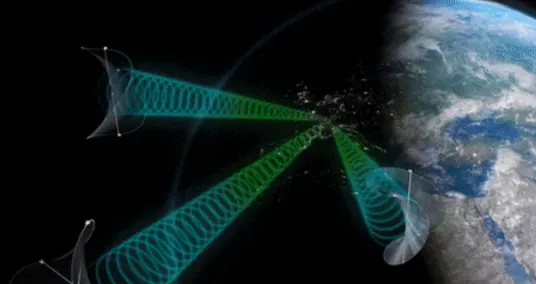Then the question arises, there is no oxygen in space, why can the planets still burn when they collide? What is the principle?
The first thing to say is that when the stars collide, it looks like they are burning, but in fact this phenomenon is not considered to be burning. In essence, the cause of this phenomenon is actually the heat radiation generated when the stars collide. . Modern physics tells us that any object whose temperature is higher than absolute zero will radiate heat in the form of electromagnetic waves. The higher the temperature of the object, the shorter the wavelength of the radiated electromagnetic wave and the higher the energy.
We humans can only perceive a small part of electromagnetic waves (that is, visible light waves). For low-temperature objects, although they also radiate electromagnetic waves, these electromagnetic waves cannot be seen by us because of their relatively long wavelengths. As the temperature rises, the electromagnetic waves it emits will become shorter and shorter. When the wavelength reaches the range of visible light, we will feel that the object is emitting light. Within a certain range, the higher the temperature of an object, the stronger the visible light it radiates, which will give us the illusion that the object is burning.
It can be seen that the “burning” phenomenon when the planets collide is actually caused by the high temperature generated during the collision, which has nothing to do with whether there is oxygen in space. So why do high temperatures occur when two planets collide? The answer is that when the planets collide, part of their kinetic energy is converted into heat energy. Let’s talk about it in detail below.
If we use a hammer to smash a nail, you will find that the nail becomes hot after you hit it several times. This is an example of the conversion of kinetic energy into heat energy. To explain this phenomenon, we need to find the answer from the microcosm.
The physical quantity of temperature refers to the intensity of thermal motion of microscopic particles (such as molecules and atoms) inside an object, and we can also understand it as a sign of the average kinetic energy of microscopic particles inside an object. Because the microscopic particles inside the solid matter are very closely connected, the thermal movement mode of the microscopic particles inside the solid is different from that of liquids and gases. Usually, they will reciprocate in a relatively balanced position (probably As shown below).
When we smash a nail with a hammer, we actually release part of the kinetic energy of the hammer on the nail. Part of the kinetic energy will cause the nail to deform, while the other part is transformed into the kinetic energy of the microscopic particles inside the nail. After the average kinetic energy of the microscopic particles increases, the frequency of their reciprocating motion is accelerated, which is manifested at the macroscopic level, that is, the temperature of the nail increases.
With the above knowledge, we can explain why high temperatures are generated when stars collide. A celestial body can be called a “planet”, which means that its mass is very large, and the speed of celestial bodies moving in space is also very fast (generally can reach tens of kilometers per second), according to the kinetic energy The formula (E = mv^2/2) shows that a celestial body that we call a “planet” contains enormous kinetic energy.
When the planets collide, huge kinetic energy is released. At the moment of impact, a large part of the kinetic energy is converted into the kinetic energy of the microscopic particles inside the planet, which causes the temperature to rise sharply, which will cause two effects. One is that high-temperature substances emit dazzling visible light, and the other is that the kinetic energy of some microscopic particles is so strong that they can break free from the limitations of solid structures. From a macroscopic perspective, it appears that many substances in the two planets have melted. The superposition of these two effects makes us feel that “when two planets collide, they will burn blazingly in space”.
It is worth mentioning that, according to scientists’ speculation, about 4.5 billion years ago, a planet “Theia” (Theia), which was about the size of Mars, collided with the original earth. The result of the impact was, “Theia” The core of the “sub” was perfectly fused with the original earth in a high-temperature environment, which made the earth have an unusually strong magnetic field since then, and the debris produced by the impact slowly formed the current moon through accretion near the earth.
Everyone knows that the Earth’s magnetic field and the existence of the moon are important conditions for the birth of life on Earth. Therefore, it can be said that star collision events are not necessarily bad things. If scientists’ speculation is correct, we should all be grateful That impact 4.5 billion years ago.




GIPHY App Key not set. Please check settings